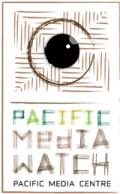
Annie Koval
CHICAGO: Turning off the television is not enough. Indirect exposure to media, such as having friends who watch a lot of television, may be more damaging to a teen's body image, say researchers using Fiji as a case study.
Wary parents will have to do more than unplug the television if they want avoid the negative influence of the media on teens.
A new study shows that “secondhand exposure,” or having a lot of friends who watch television, may be more harmful when it comes to body image. Much like the concept of secondhand smoke, some adolescents experienced its effect without even owning a television.
“What is going on in a friend’s home is as significant as what is goingon in your own home,” said Anne Becker, lead author and vice chair of the Department of Global Health and Social Medicine at Harvard Medical School.
Researchers at Harvard Medical School’s Department of Global Health and Social Medicine examined the link between media exposure and eating disorders in Fiji among girls ages 15 to 20.
Fiji was chosen because of its wide range of access to media exposure, Becker said.
About 8 percent of respondents owned a television in a rural area compared to 85.5 percent of girls located in an urban region. On average, the respondents reported spending three evenings a week viewing television.
While it is undeniable that peer groups are highly persuasive, their access to televisions was the biggest factor for eating disorder symptoms. The changing attitudes of the girls who had been exposed to television were more powerful than the respondent actually watching herself.
“This tells us that it is no longer a personal choice and there are innocent victims,” Becker said.
This is the first study that attempted to quantify the role of social networks in spreading the negative consequences of media consumption on eating disorders, according to Becker. The study appears in the current edition of the British Journal of Psychiatry.
Becker and her colleagues took careful measures for variables, including influences from tourism and Western culture, girls who traveled overseas or had family members travel overseas, and other forms of eating disorders in the culture. Even after excluding these, the results of indirect exposure remained significant, she said.
Although adolescents in America have been exposed to television for years, Becker was confident in saying that if the collateral effects could happen in Fiji, they could happen here.
“It warrants concern--we need to reframe the facts that we are giving to parents.”
These results are consistent with research over the past decade that found the large impact peers have in establishing social norms, said Renee Engeln-Maddox, a senior lecturer in the psychology department at Northwestern University.
“Most girls actually say that they compare their body to the bodies of their peers more frequently than they compare their body to the bodies of actresses and models,” she said.
Interventions will need to be at a community level, Becker said.
“We have to recognise how kids are processing and using content.”
To create positive eating habits, teens will have to change the way they perceive celebrities, said Christine M. Palumbo, a registered dietician in Chicago.
“Celebrities are carefully crafted images,” she said. “Their bodies are their careers, and they spend an inordinate amount of time working on them.”
In America, eating disorders often run in families, Palumbo said. What parents say, especially mothers, is emphasised like a “megaphone.”
“Mothers should not announce how fat they feel and they should enjoy a variety of foods without apology – it’s OK to have a doughnut or butter on your popcorn,” she said.
This is the point where parents and consumers need to have a voice about what is on their television, Becker said.
“Content can be safe. All it takes is concerned consumers.” - Medill Journalism School/Pacific Media Watch



